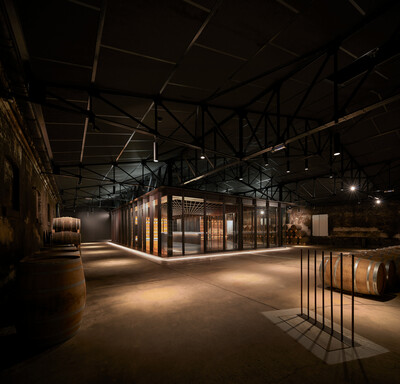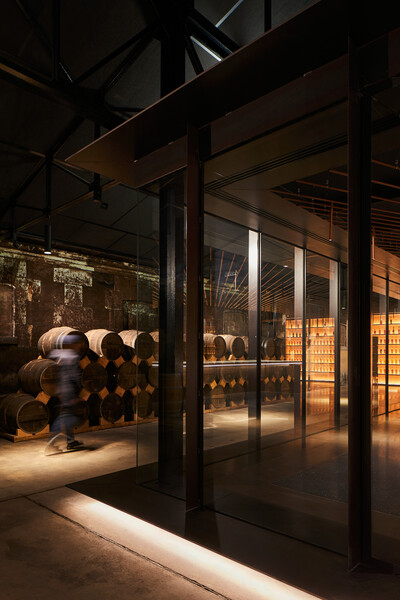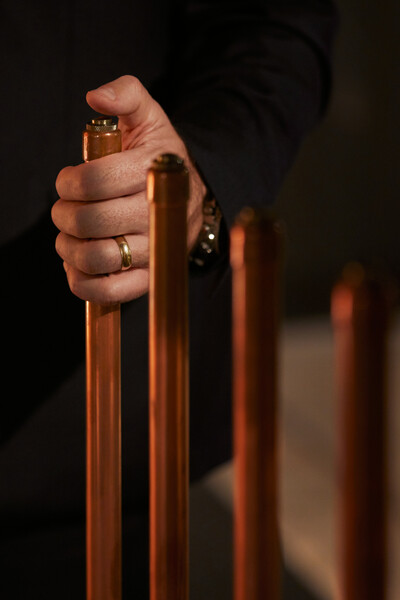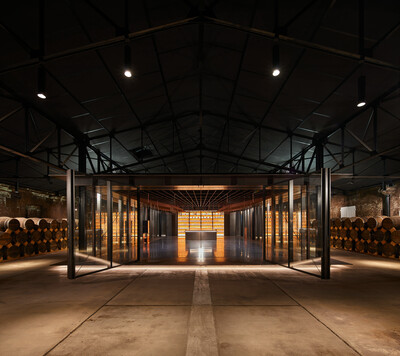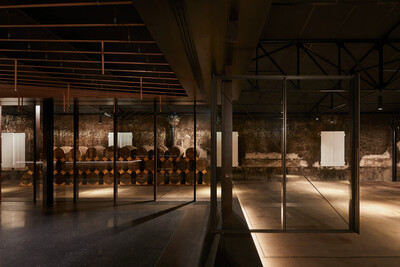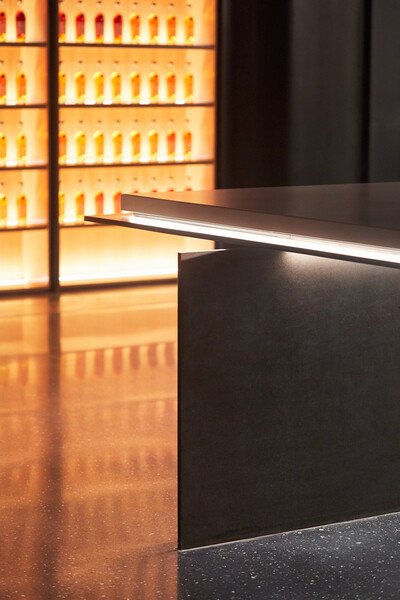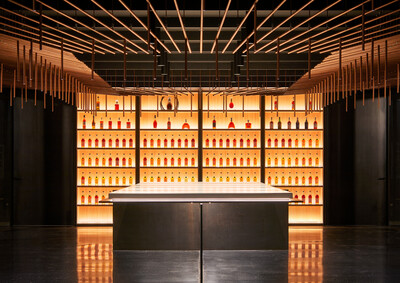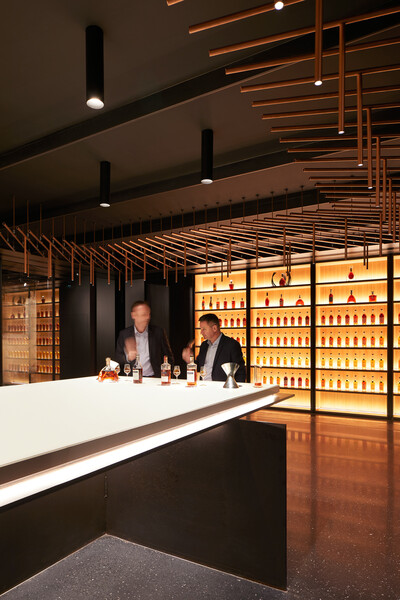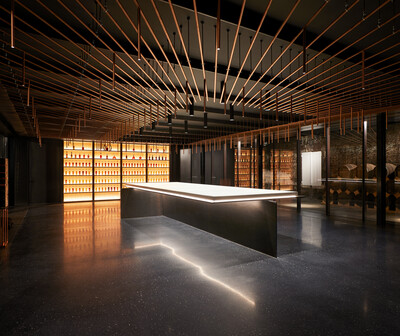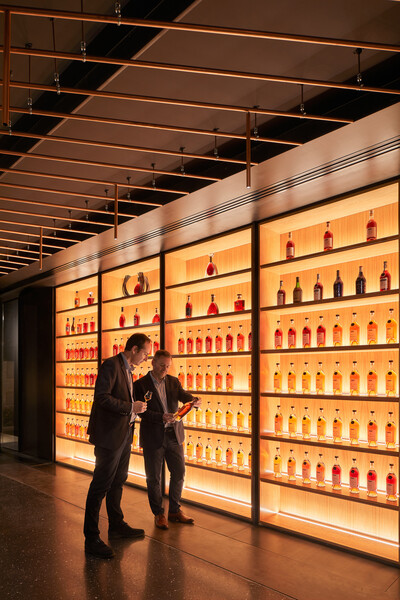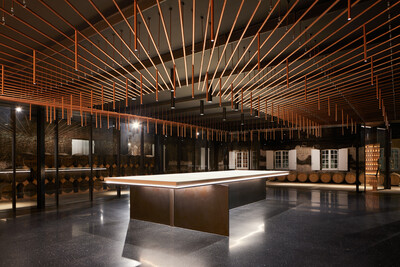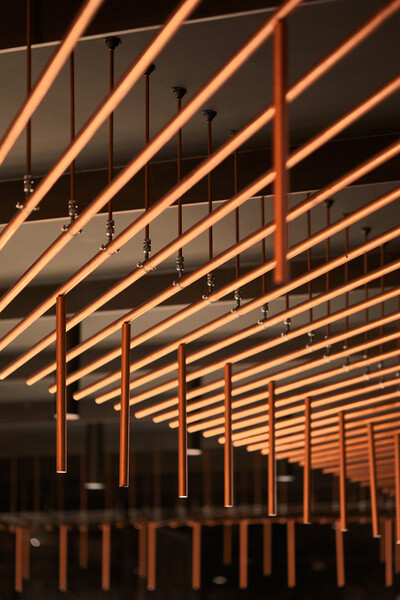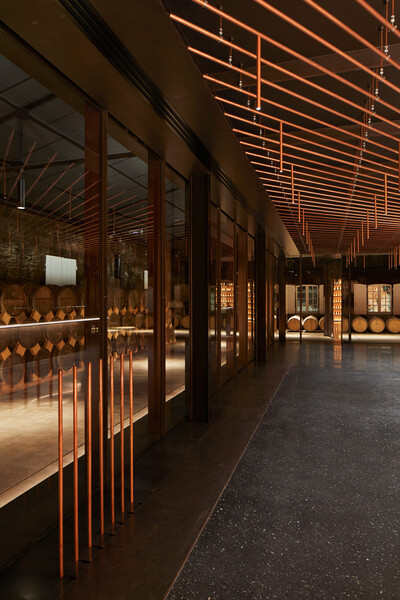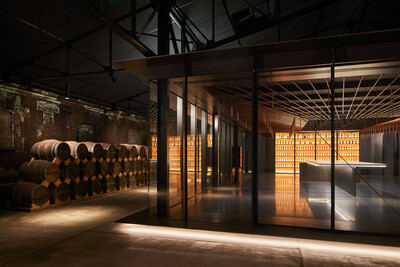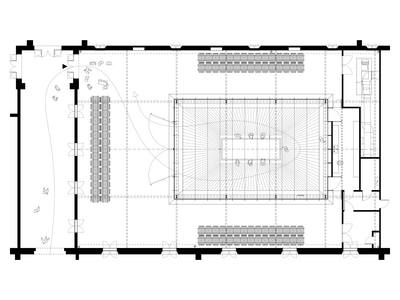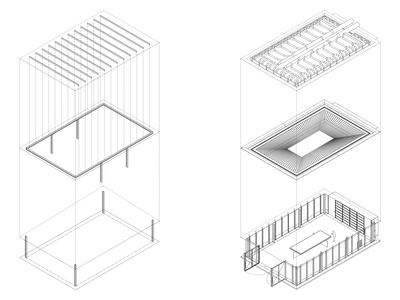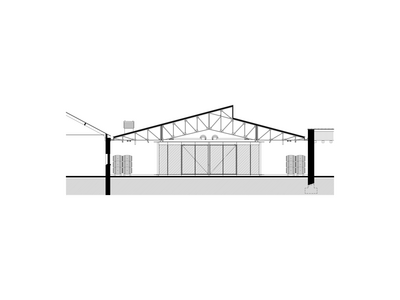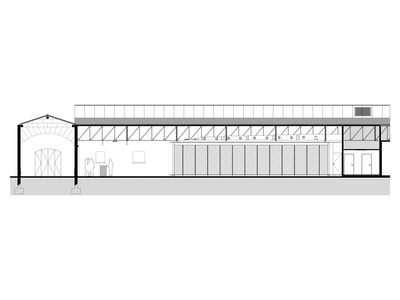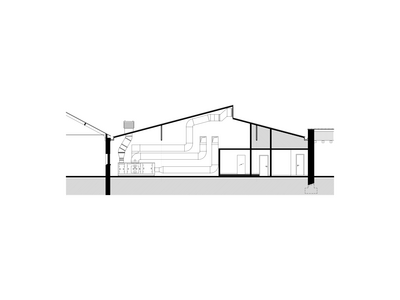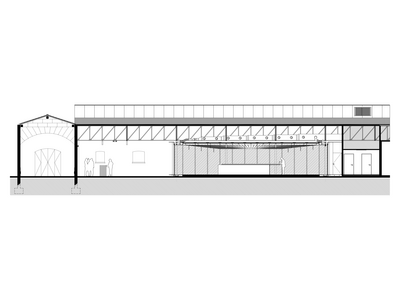Creating a prestigious space for the assemblage of industrial materials as part of a pathway revealing the knowledge and expertise, magic and rituals of a renowned house of cognac.
Tasting room for master blenders
Martell wishes to showcase its three-hundred-year history and expertise through a tasting room where master blenders will work in front of an informed audience. A wine and spirits storehouse accommodates the project, an architectural setting with a strong identity: floor in rough concrete, thick walls covered in black mushrooms (torulas), a thin metal framework, with copper stills and oak barrels stored on site. In the centre of the space, the new tasting room skims the steel structure, nestled between four existing posts, and set slightly above the floor. The project is designed as an assemblage of materials, echoing the craftsmanship of the cellar masters who compose the vintages. Its minimalist silhouette takes advantage of the low lighting and silence, well suited to the ritual character of tasting. Two monumental doors welcome the visitors within the thirty-one-tonne structure in raw steel, coated with calamine. The cellar masters reveal their art and explain the menu of vintages set into a tasting table made of balanced layers of sheet steel, with a matte white surface on top to enhance the amber hues of the cognac that are also reflected in a copper chandelier. The work on the lighting reinforces the impact of the architecture, designed as an initiatory pathway: showcasing the roughness of the walls, unveiling the barrels, the room, and then the oak cognac library, as a backdrop.
171 rue du Tondu 33 000 Bordeaux — France
09 81 24 04 40
Stanislas Elluin
Architect DEHMONP, partner
stanislas.elluin@edgar.archi
Igor Duolé
Architect DEHMONP, Civil Engineer ESTP, partner
igor.duole@edgar.archi
Ludovic Esnault Gillon
Architect DE, partner
ludovic.gillon@edgar.archi
Caroline Chabot
Architect DE
caroline.chabot@edgar.archi
Emeric Le Bos
Architect DE
emeric.lebos@edgar.archi
Vincent Saura
Architect DEHMONP
vincent.saura@edgar.archi
Design: Spassky Fischer and Antoine Elsensohn
Photography: Ivan Mathie
Texts: Fanny Léglise
Development: Tristan Bagot
Edgar sees contemporary architecture as a way of generously exploring both spatial and social potential. Each project represents a chance to question and test various possibilities so as to spark a conversation with the customer. Edgar pays particular attention to the historical and landscaping context that each situation presents. Each experience requires flexibility in terms of process on the part of its designers and their solutions. Oscillating between devising a home extension on a shoestring and an extraordinary commission requires major adjustments, in which the eclecticism of architectural composition becomes clear. Edgar seeks a sensitive sobriety that stems from the enhancement of structure. The constructive aspect is expressed through grid compositions that organise the space. The architecture is explicit, avoiding overstatement. The finishings are discreet, with the accent placed on constructive efficacy.
The structure forms the architecture,
the material defines the project,
and story is its guide.
The Edgar office is on a street corner, engaging local practice, and handy to its partners. Added to the complementary abilities of its founders (engineering, architecture, scenography, and architectural culture communication) were the singular profiles of a rapidly expanded team. Given how scales and fields of intervention are freely invested, the duos established to manage each project are mixed and matched. The power of collective work guarantees an open-minded vision of the profession, where the agency takes the time to discuss architecture and show its work, particularly behind-the-scenes views of its construction sites.
Born in 2017, Edgar is an alter ego, the acronym of its three founders, graduates from the École Nationale Supérieure d’Architecture et de Paysage de Bordeaux. The agency was created through Stanislas Elluin’s, Igor Duolé’s, and Ludovic Gillon’s shared ideas about architecture. The complementary backgrounds of its founders make up “the album” of Edgar, based on a common analysis of cultures of habitation and design of urban systems, relating architecture to its historical period and composition to its significations.
Creating a prestigious space for the assemblage of industrial materials as part of a pathway revealing the knowledge and expertise, magic and rituals of a renowned house of cognac.
Tasting room for master blenders
Martell wishes to showcase its three-hundred-year history and expertise through a tasting room where master blenders will work in front of an informed audience. A wine and spirits storehouse accommodates the project, an architectural setting with a strong identity: floor in rough concrete, thick walls covered in black mushrooms (torulas), a thin metal framework, with copper stills and oak barrels stored on site. In the centre of the space, the new tasting room skims the steel structure, nestled between four existing posts, and set slightly above the floor. The project is designed as an assemblage of materials, echoing the craftsmanship of the cellar masters who compose the vintages. Its minimalist silhouette takes advantage of the low lighting and silence, well suited to the ritual character of tasting. Two monumental doors welcome the visitors within the thirty-one-tonne structure in raw steel, coated with calamine. The cellar masters reveal their art and explain the menu of vintages set into a tasting table made of balanced layers of sheet steel, with a matte white surface on top to enhance the amber hues of the cognac that are also reflected in a copper chandelier. The work on the lighting reinforces the impact of the architecture, designed as an initiatory pathway: showcasing the roughness of the walls, unveiling the barrels, the room, and then the oak cognac library, as a backdrop.
